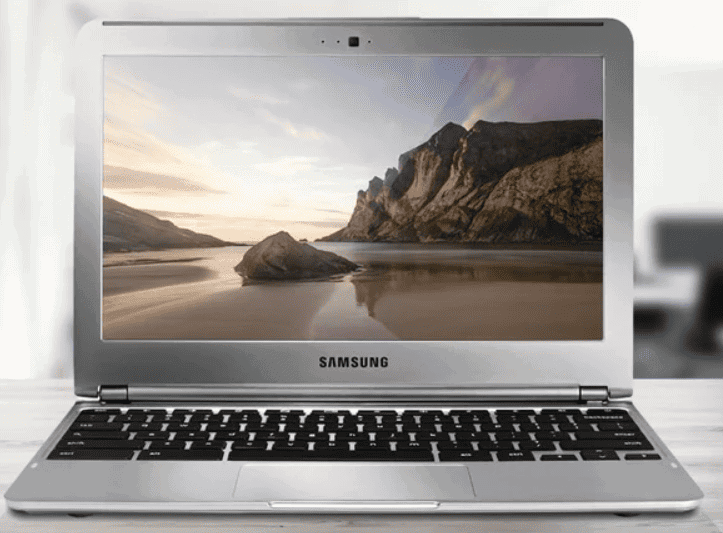Locking the screen on a Chromebook is important for keeping your information safe. You can lock the screen using keyboard shortcuts, the quick settings panel, or by closing the lid. To set up the screen lock feature, go to Chromebook settings. You can choose to use a password or PIN to unlock the screen for added security. For extra convenience, you can also unlock your Chromebook with a connected phone or use smart lock features. You can personalize the lock screen by displaying widgets or using media controls without unlocking the device. In Chrome OS settings, you can choose to show notifications or customize the look of the lock screen to fit your preferences.
Keep Your Chromebook Secure
Locking your Chromebook’s screen is an important basic security step. It prevents unauthorized use of your device when you’re away. Here’s how to do it quickly, plus some extra tips for Chromebook safety.
How to Lock Your Screen
You have a few options to lock your Chromebook screen:
- Keyboard Shortcut: Press Search + L or Launcher + L.
- From the Taskbar: Click the time in the bottom right corner, then select the Lock icon.
Optional: Require Password on Wake
For even more security, change your settings to require your password when your Chromebook wakes from sleep or when the lid is opened:
- Click the time at the bottom-right of your screen.
- Choose Settings (the gear icon).
- Select Security and Privacy.
- Go to Lock screen and sign-in.
- Enable Lock when sleeping or lid is closed.

Additional Security Tips
Here’s a quick list for maximizing your Chromebook’s security
| Tip | Action |
|---|---|
| Keep Software Updated | ChromeOS and apps usually update automatically. You can manually check in Settings. |
| Use Strong Passwords | Avoid easy-to-guess passwords. Change them regularly. |
| Beware of Public Wi-Fi | Public Wi-Fi can be risky. Use a VPN if you must. |
| Enable Two-Factor Authentication | This adds a layer of security to logins. |
How to Freeze Your Screen on a Chromebook
While there’s no built-in “freeze screen” function on a Chromebook like you might find on a Windows PC, there are a couple of ways to achieve a similar effect:
1. Take a Screenshot
- Keyboard Shortcut: Press Ctrl + Show windows key (the key with a rectangle and two lines next to it, usually located in the top row). This will capture your entire screen and save it to your “Downloads” folder.
- Partial Screenshot: Press Ctrl + Shift + Show windows key, then click and drag to select the area of your screen you want to capture.
- Access Your Screenshots: Open the Files app and go to the “Downloads” folder to find your screenshots.
2. Use an Extension
Several Chrome extensions can provide more control over screen capture, including the ability to “freeze” a specific part of your screen. Here’s a popular option:
- Awesome Screenshot & Screen Recorder: This extension lets you capture the entire screen, a specific area, or even a scrolling webpage. You can also annotate screenshots and record your screen.
Important Notes:
- Privacy: Be mindful of sensitive information visible on your screen before taking a screenshot or using a screen capture extension.
- Alternative: If you need to freeze your screen to troubleshoot an issue, consider taking a video recording of the problem instead. This can be helpful when seeking technical support.
Key Takeaways
- Locking the screen is essential for Chromebook security
- Screen lock settings can be customized with a password or PIN
- The lock screen can display widgets and controls for convenience
Setting Up Screen Lock on Chromebook
Chromebook users must enable screen lock for added security. This setting prevents others from accessing your device when you’re not present.
Lock Screen Options
You can set up a lock screen using a PIN or password tied to your Google account. Here’s how:
- Open the Settings menu.
- Click on Security and Privacy.
- Select Screen lock.
- Enter your Google account password to make changes.
- Choose PIN or password and follow the prompts to create a new one.
Regular screen locking safeguards your information and should be a routine practice.
Using Quick Lock Methods
For fast security, you can use keyboard shortcuts like Search + L or Launcher + L to lock your Chromebook. Besides keyboard shortcuts, pressing the power button once quickly or closing the laptop lid are effective methods to ensure immediate screen lock activation.
To lock using the magnifying glass key, you must hold it and then press the L key. This is the default method if your Chromebook has a dedicated lock key.
These quick actions allow for a swift response to privacy and security concerns.
Advanced Lock Features and Personalization
Chromebooks offer advanced lock features to improve security and personalization options to enhance user experience. They allow users to secure their devices and also showcase personal style.
Automating Screen Lock Functions
Sleeping: Systems can lock automatically when entering sleep mode.
- Tablet Mode: On a tablet, closing the lid or pressing the power button initiates sleep mode.
- Desktop Mode: Set the system to sleep after a period of inactivity under power settings.
Users who frequently step away from their Chromebook may opt to adjust settings so their device locks as soon as it goes to sleep or after a set duration of no activity.
Linking to Android Devices
Smart Lock: Linking a Chromebook with an Android phone eases access.
- Bluetooth: Keep your Android phone close with Bluetooth on.
- Unlock: When near, the Chromebook senses the Android phone and unlocks.
This feature saves time and reduces the need to enter a Google account password every time. Ensure both devices are signed in to the same Google account for a seamless connection.
Customizing Screen Lock Appearance
Personalize: Users can personalize their lock screen to show more than just a profile picture.
- Screen Saver: Adopt a screen saver to display a personal touch.
- Smart Display: Turn the lock screen into a smart display to view weather, time, or personal photos.
Access these features by going to Chrome OS settings and selecting ‘Screen Saver’ under the ‘Personalization’ option. This creates a more engaging lock screen experience.
Frequently Asked Questions
Securing your Chromebook can be quick and easy with the right information. Here we address common questions about locking the screen on a Chromebook to ensure your device remains secure when you’re not using it.
What keyboard shortcut can I use to lock my Chromebook screen?
You can quickly lock your Chromebook by pressing the Search + L keys. Another option is to press the Launcher + L keys.
How can I customize the lock screen wallpaper on my Chromebook?
To change the lock screen wallpaper, right-click on your desktop and select “Set wallpaper.” You can choose from the existing images or upload your own.
What steps are involved in changing the lock screen password on a Chromebook?
Change your lock screen password by opening the settings. Navigate to the “People” section and click on “Security and Privacy.” From there, you can change your password.
How can I disable the lock screen feature on my Chromebook?
Disabling the lock screen feature is not recommended for security reasons, but if you need to turn it off, you can do so in the settings under “Security and Privacy.” Keep in mind this could make your device more vulnerable.
Is there a way to lock the touch functionality on my Chromebook’s screen?
Locking the touch functionality is not commonly supported as a feature on Chromebooks.
How can I prevent my Chromebook’s touch screen from registering accidental inputs?
To prevent accidental touch inputs, you can either disable touch input in the device settings or use a screen protector designed to reduce sensitivity.







